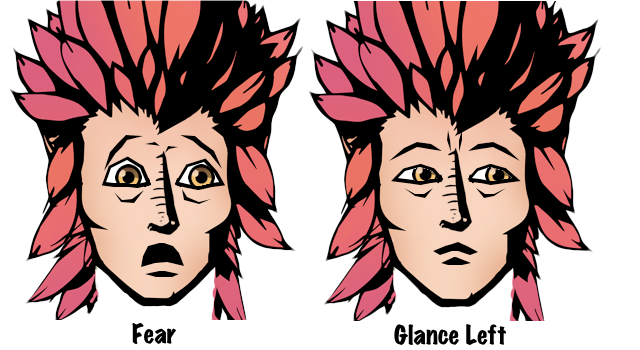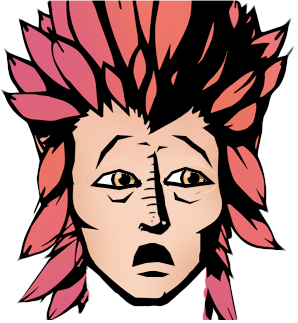This concerns how I combine facial expressions: emotions and excursions. An emotion is the expression that is directly associated with a verb. Examples of emotions are anger, fear, and happiness. Excursions are micro-expressions that animate the emotional expressions. Examples of excursions are looking down, raising an eyebrow, or sighing.
Here is an emotion (fear) next to an excursion (looking leftward):

Now, if the excursion (glance left) merely replaces the emotion (fear), then we see a smooth transition from the emotion to the excursion, followed by a return to the emotion. This is easy to implement, but it suggests that the emotion is faked. “I’m so afraid, I’m so afraid… Oh, gee, what’s that over to the left? Hmm… Oh yes, I’m so afraid…” Unconvincing.
What I’d prefer is that the excursion be added to the emotion rather than replace it. In other words, the eyes would shift further left without modifying the rest of the emotional expression.
I currently handle this with a fractional term I call “participation” that is applied separetly to each feature. For example, in this case, I would set the participation value for the mouth to zero, so that it would not change while the eyes excurse to the left. The result would look something like this:

It’s pretty good, but I fear that there might be situations in which this fails badly.
April 14th
What do I mean by the magnitude of the excursion? Imagine an excursion at “half magnitude” — does it go half as far or take half as long? Computationally, the former is easier. I think I mean the former.
